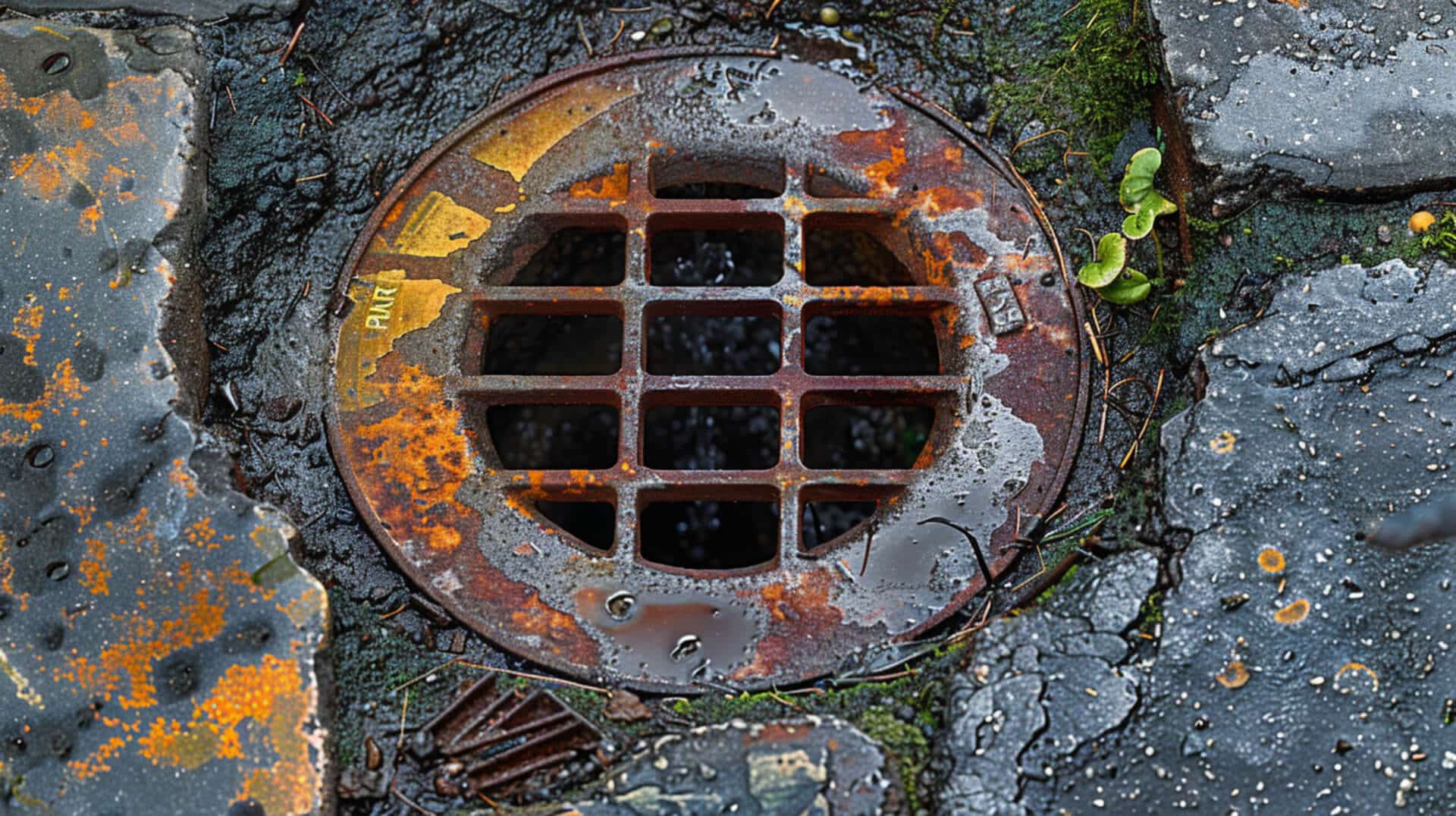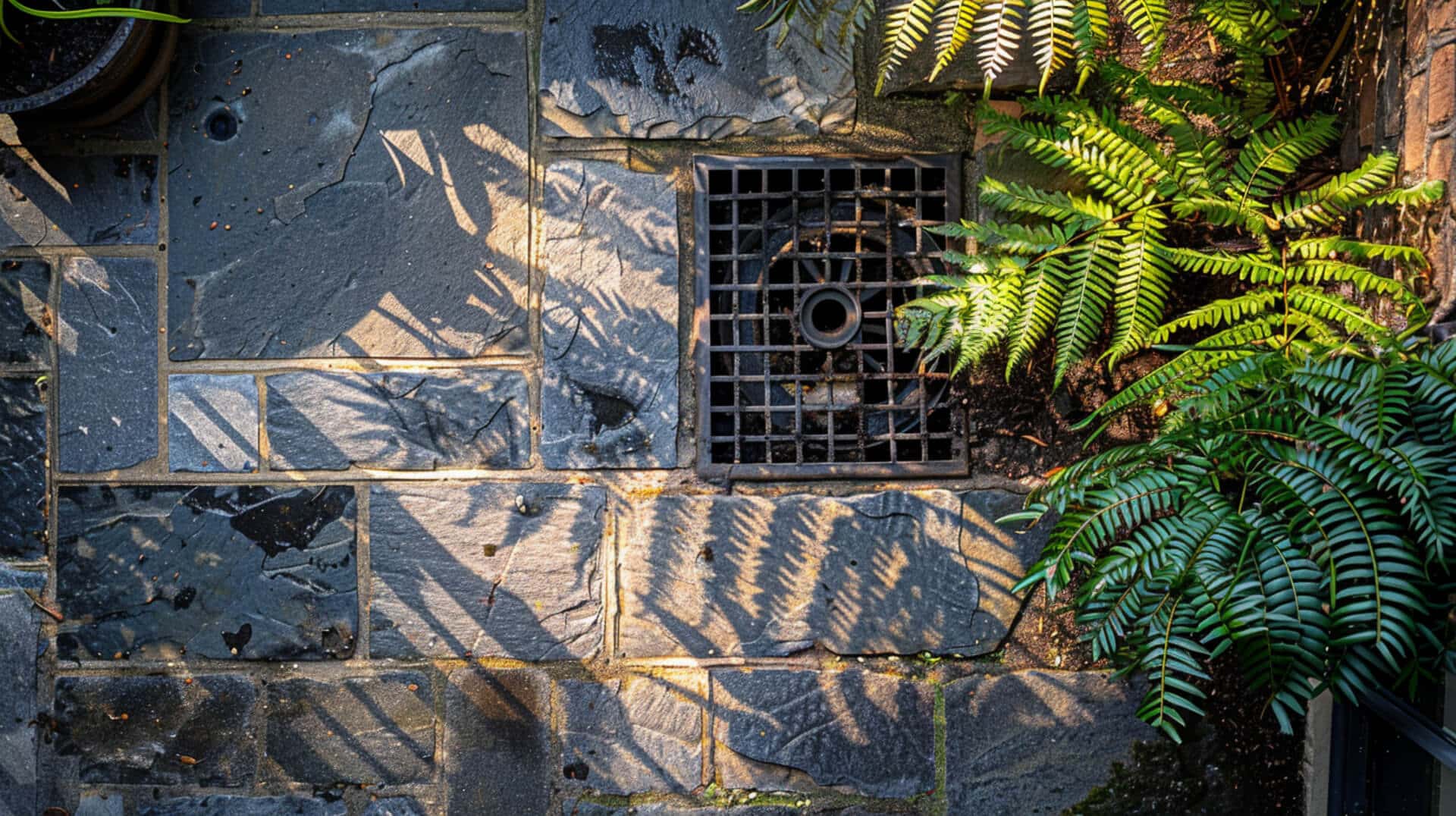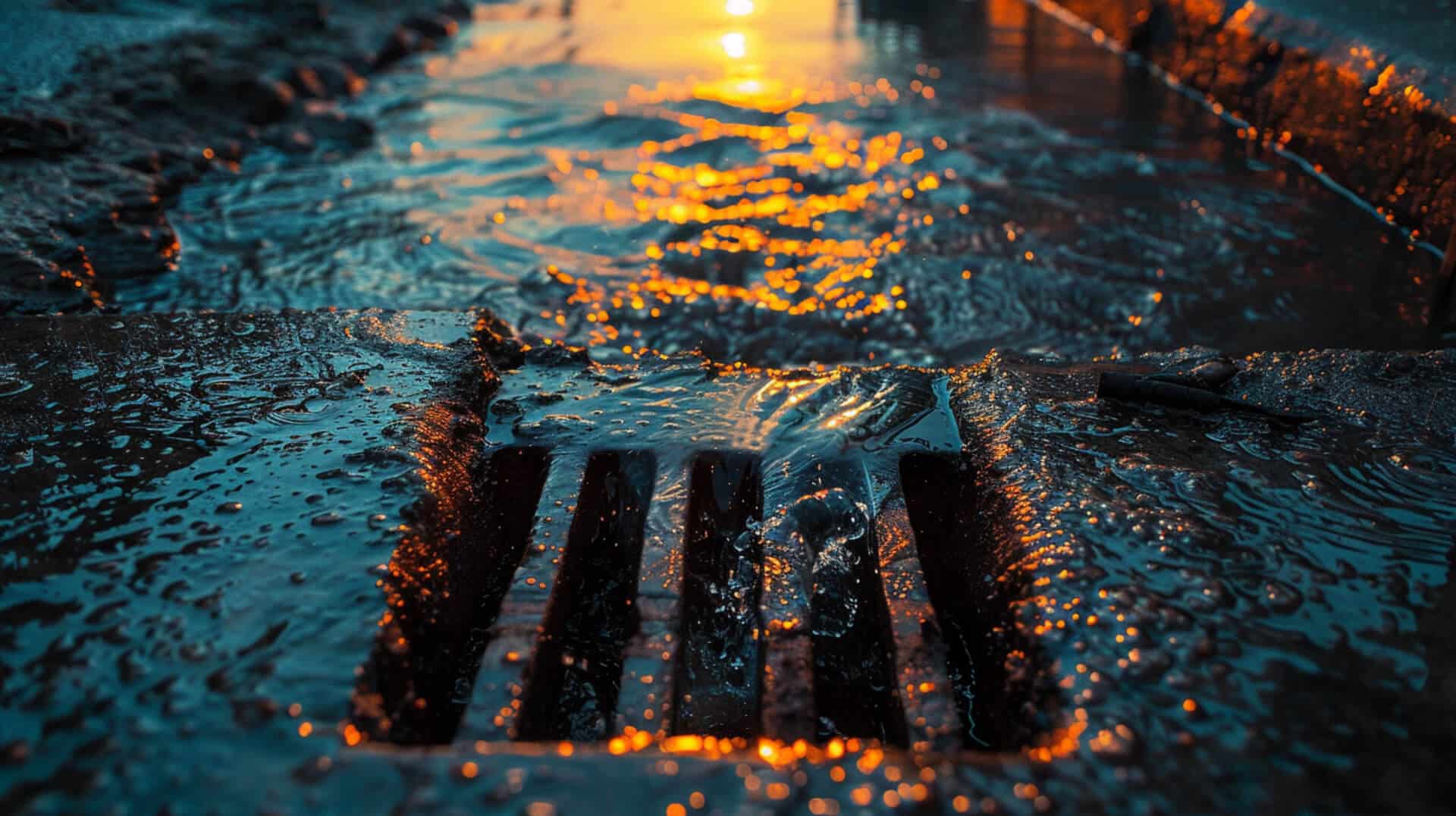 Is Soap Scum Responsible for Your Slow Drains?
Is Soap Scum Responsible for Your Slow Drains?
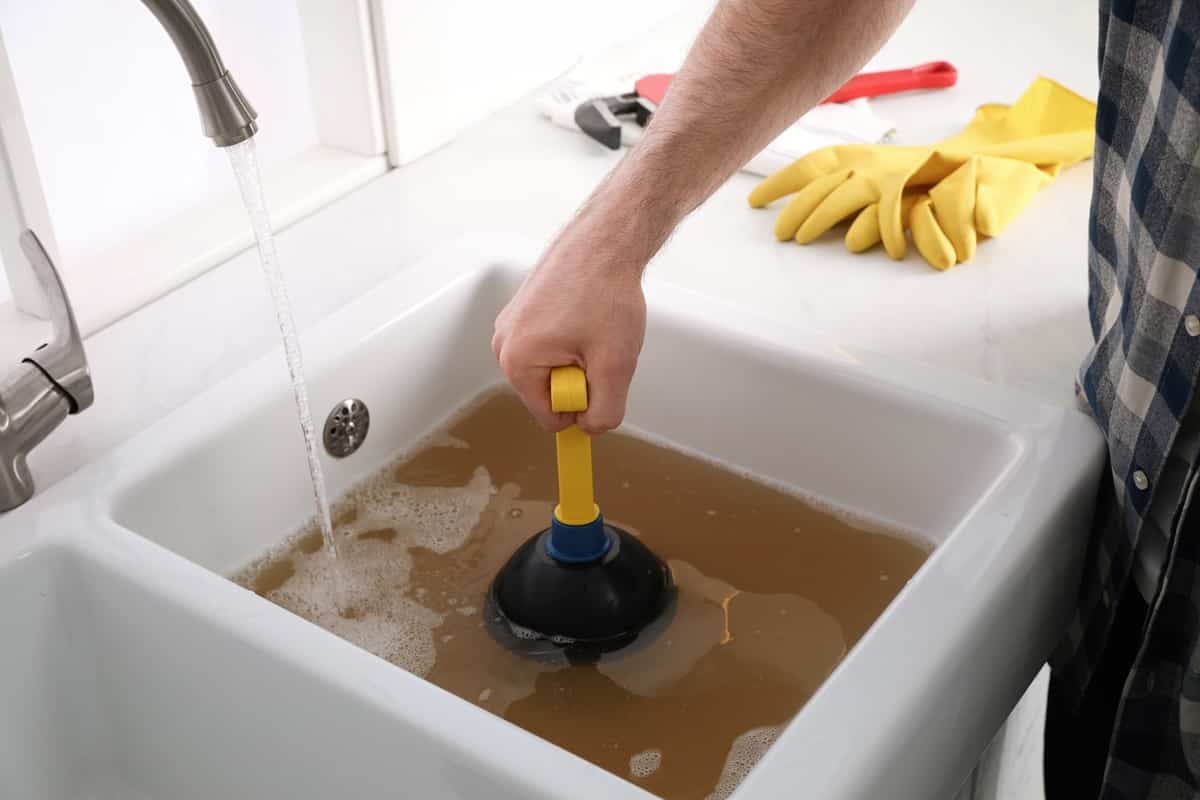
What Are Common Causes of Blocked Drains – Soap Scum?
Blocked drains are a common issue faced by many property owners, business owners, and facility managers. One of the primary culprits behind these blockages is soap scum. Understanding what soap scum is, how it forms, and why it is important to address can help in preventing and managing drain blockages effectively.
What Is Soap Scum and How Does It Form?
Soap scum is a white or greyish film that forms on surfaces in bathrooms and kitchens. It is primarily composed of calcium stearate and magnesium stearate, which are the result of a reaction between soap and hard water minerals. When soap combines with the minerals in hard water, it creates a sticky residue that adheres to surfaces and accumulates over time.
Why Is It Important to Address Soap Scum Blockages?
Addressing soap scum blockages is crucial for several reasons:
- Water Flow: Soap scum can significantly reduce water flow in drains, leading to slow drainage and standing water.
- Hygiene: The buildup of soap scum can attract mildew, mould, and bacteria, posing health risks.
- Pipe Damage: Over time, soap scum can contribute to pipe corrosion and damage, leading to costly repairs.
- Efficiency: Regular maintenance and prompt removal of soap scum can ensure the efficient functioning of the plumbing system.
Who Is Affected by Soap Scum Blockages?
Soap scum blockages can affect a wide range of individuals and entities, including:
- Homeowners: Residential properties often face issues with soap scum in bathroom and kitchen drains.
- Business Owners: Commercial establishments, especially those in the hospitality and food service industries, can experience frequent soap scum blockages.
- Facility Managers: Large facilities, such as hotels, hospitals, and office buildings, need to manage soap scum buildup to maintain operational efficiency and hygiene standards.
What Will This Guide Cover?
This guide will provide comprehensive information on the following topics:
- Understanding Soap Scum Formation: Chemical components, role of hard water, and contributing factors.
- Impact of Soap Scum on Drainage Systems: Effects on water flow, long-term consequences, and potential pipe damage.
- Identifying Soap Scum Blockages: Signs, detection tools, and importance of early detection.
- Preventive Measures: Regular cleaning routines, products to reduce buildup, and the benefits of soap-free cleansers.
- DIY Methods for Removing Soap Scum: Step-by-step instructions for home remedies and tools.
- Professional Solutions: Services offered by plumbers, including hydro jetting and CCTV inspections.
- Comparing DIY and Professional Methods: Pros and cons, cost implications, and effectiveness.
- Long-term Solutions and Products: Enzymatic cleaners, water softeners, and regular maintenance practices.
- Effects of Hard Water on Soap Scum Formation: Exacerbation of issues and solutions for hard water problems.
- Technical Terms and Concepts: Explanation of relevant terms and their relation to soap scum.
By addressing these points, this guide aims to equip readers with the knowledge and tools necessary to manage and prevent soap scum-related drain blockages effectively.
Understanding Soap Scum Formation
Soap scum is a common cause of blocked drains, particularly in bathrooms. It forms when soap combines with minerals in water, creating a sticky residue that adheres to surfaces and accumulates over time.
Chemical Components of Soap Scum
Soap scum primarily consists of calcium stearate and magnesium stearate. These compounds form when soap reacts with calcium and magnesium ions present in hard water. The resulting residue is insoluble in water, making it difficult to wash away.
Contribution of Hard Water
Hard water contains high levels of dissolved minerals, particularly calcium and magnesium. When soap is used in hard water, it reacts with these minerals to form soap scum. The higher the mineral content in the water, the more soap scum is likely to form.
Soaps and Buildup
Certain types of soap contribute more to soap scum buildup. Bar soaps, which often contain sodium stearate, are more likely to react with hard water minerals compared to liquid soaps. Liquid soaps and body washes typically contain surfactants that are less prone to forming soap scum.
Role of Body Oils and Hair
Body oils and hair can exacerbate the formation of soap scum. Oils from the skin mix with soap and hard water minerals, creating a thicker, more adhesive residue. Hair can trap soap scum, leading to larger blockages in the drain. Regular cleaning and the use of drain guards can help mitigate these issues.
By understanding the chemical components and contributing factors of soap scum, property owners, business owners, and facility managers can take proactive measures to prevent and address blockages in their drainage systems.
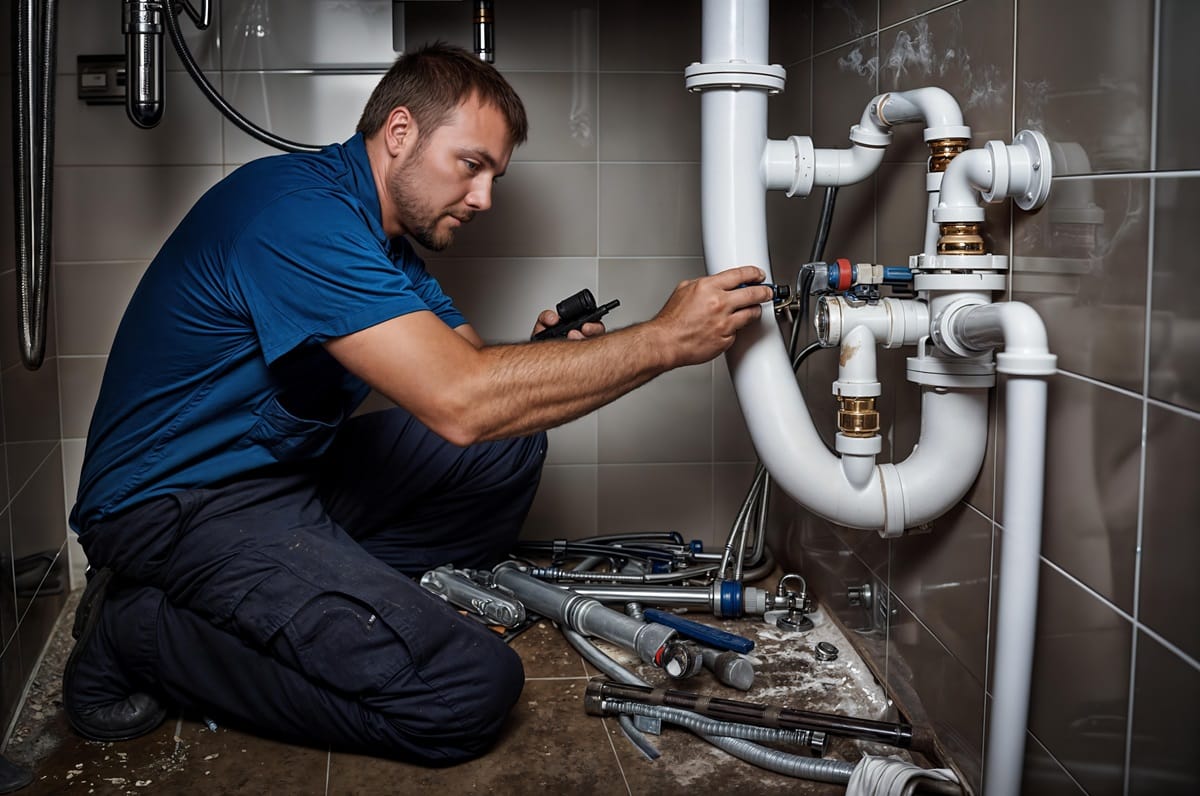
Impact of Soap Scum on Drainage Systems
Soap scum can significantly impact drainage systems, leading to various issues that require prompt attention.
How Soap Scum Affects Water Flow in Drains
Soap scum forms a sticky residue that adheres to the inner surfaces of pipes. Over time, this buildup narrows the diameter of the pipes, restricting water flow. This can result in slow drainage and increased pressure within the plumbing system.
Long-term Effects of Soap Scum Buildup
The accumulation of soap scum can lead to persistent blockages. These blockages can cause water to back up, leading to standing water in sinks, showers, and bathtubs. Additionally, the restricted water flow can place extra strain on the plumbing system, potentially leading to leaks and other issues.
Potential for Pipe Corrosion or Damage
Soap scum can contribute to pipe corrosion, especially in metal pipes. The residue can trap moisture against the pipe walls, promoting rust and corrosion. Over time, this can weaken the pipes, increasing the risk of leaks and bursts.
Importance of Addressing Soap Scum Promptly
Addressing soap scum buildup promptly is crucial to maintaining the integrity of the drainage system. Regular cleaning and preventive measures can help mitigate the effects of soap scum, ensuring smooth water flow and reducing the risk of costly repairs. Ignoring soap scum buildup can lead to more severe blockages and potential damage to the plumbing infrastructure.
Identifying Soap Scum Blockages
Soap scum blockages can cause significant issues in drainage systems. Recognising the signs early can help mitigate more severe problems.
Signs of a Soap Scum Blockage
Several indicators suggest a soap scum blockage in drains:
- Slow Drainage: Water takes longer to drain from sinks, showers, or bathtubs.
- Gurgling Noises: Unusual sounds from the drain when water is flowing.
- Bad Odours: Persistent unpleasant smells emanating from the drain.
- Standing Water: Water pooling around the drain area.
Differentiating Soap Scum Blockages from Other Types
Soap scum blockages can be distinguished from other types of blockages by their specific characteristics:
- Consistency: Soap scum is typically sticky and white or grey.
- Location: Commonly found in bathroom drains where soap and water are frequently used.
- Associated Debris: Often mixed with hair and body oils.
Tools for Detecting Soap Scum in Drains
Several tools can help identify soap scum blockages:
- Drain Snake: A flexible tool that can be inserted into the drain to remove blockages.
- CCTV Drain Inspection: A camera system that provides a visual inspection of the inside of pipes.
- Plunger: Can help dislodge blockages and indicate the presence of soap scum.
Importance of Early Detection
Early detection of soap scum blockages is crucial for several reasons:
- Prevents Severe Blockages: Addressing the issue early can prevent complete blockages.
- Reduces Repair Costs: Early intervention can save on costly repairs and replacements.
- Maintains Drain Efficiency: Ensures smooth water flow and reduces the risk of further complications.
By identifying the signs and using appropriate tools, property owners, business owners, and facility managers can effectively manage and prevent soap scum blockages in their drainage systems.
Preventive Measures for Soap Scum Blockages
Preventing soap scum blockages is essential for maintaining efficient drainage systems. Implementing regular cleaning routines and using appropriate products can significantly reduce the formation of soap scum.
Regular Cleaning to Prevent Soap Scum Buildup
Regular cleaning is crucial in preventing soap scum from accumulating in drains. Simple practices such as wiping down surfaces after use and using a drain snake periodically can help keep drains clear. Consistent maintenance ensures that soap scum does not have the opportunity to build up and cause blockages.
Products to Reduce Soap Scum Formation
Several products can help reduce soap scum formation:
- Enzymatic Cleaners: These cleaners break down organic matter naturally and are safe for regular use.
- Water Softeners: Installing a water softener can reduce the mineral content in water, thereby decreasing soap scum formation.
- Soap-Free Cleansers: Using soap-free cleansers can prevent the formation of soap scum, as they do not react with minerals in the water.
Benefits of Using Soap-Free Cleansers
Soap-free cleansers are beneficial because they do not contain the compounds that react with hard water minerals to form soap scum. These cleansers are typically formulated with surfactants that are less likely to leave residue, making them an effective alternative for preventing blockages.
Role of Water Softeners in Preventing Soap Scum
Water softeners play a significant role in preventing soap scum by reducing the hardness of the water. Hard water contains high levels of calcium and magnesium, which react with soap to form scum. By softening the water, these minerals are removed or neutralised, thereby reducing the likelihood of soap scum formation.
By incorporating these preventive measures, property owners, business owners, and facility managers can effectively manage and reduce the risk of soap scum blockages in their drainage systems.
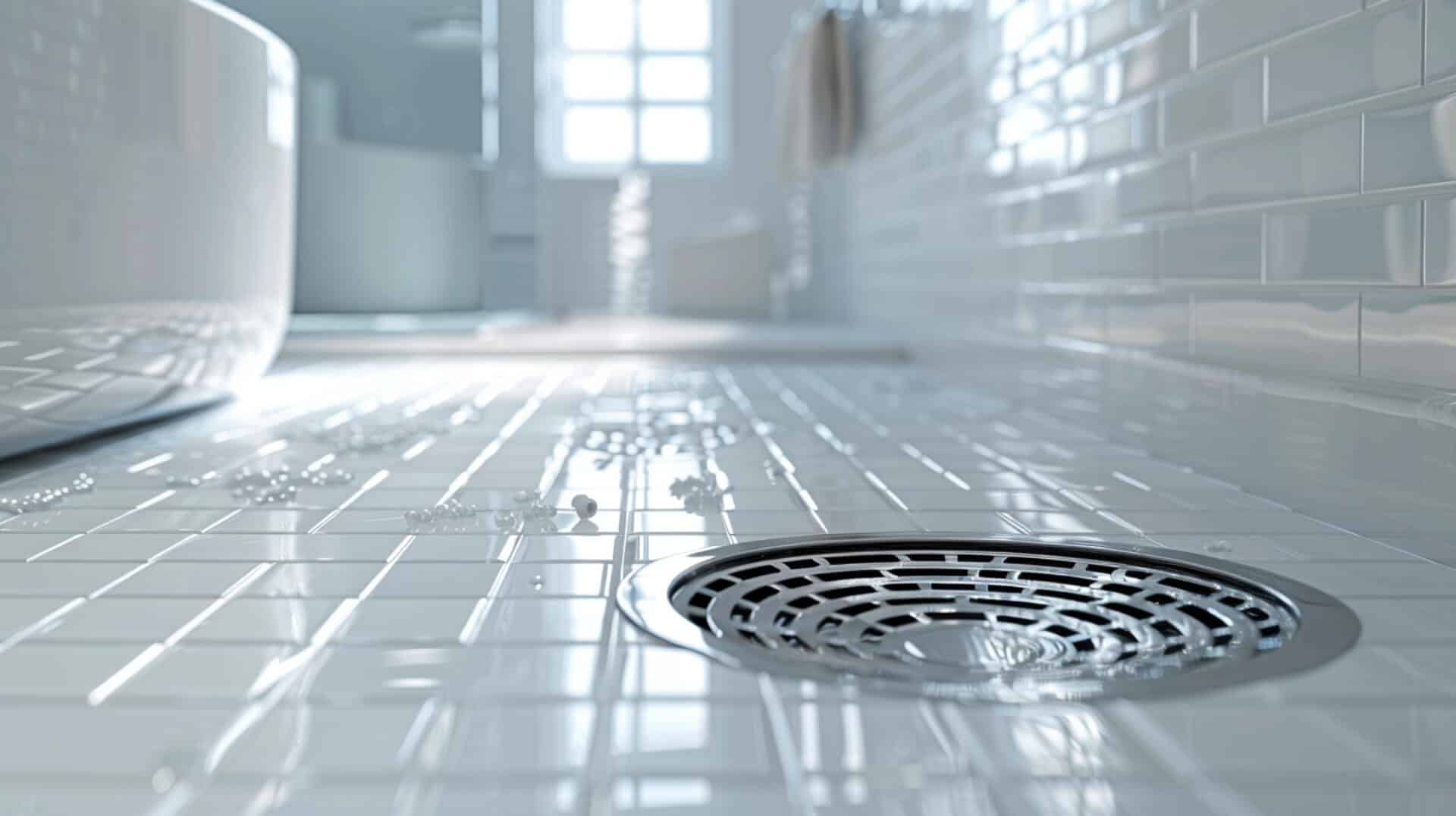
DIY Methods for Removing Soap Scum
Soap scum can be effectively managed with several do-it-yourself (DIY) methods. These approaches are practical and can be implemented using common household items.
Steps for Using Boiling Water to Clear Soap Scum
Boiling water is a simple yet effective method for dissolving soap scum:
- Boil Water: Heat a pot of water until it reaches a rolling boil.
- Pour Slowly: Carefully pour the boiling water down the drain in stages, allowing it to work through the buildup.
- Repeat if Necessary: Repeat the process if the blockage persists.
Effectiveness of the Vinegar and Baking Soda Method
The combination of vinegar and baking soda creates a chemical reaction that can help clear soap scum:
- Pour Baking Soda: Pour half a cup of baking soda down the drain.
- Add Vinegar: Follow with half a cup of white vinegar.
- Wait: Allow the mixture to sit for 15-30 minutes.
- Flush with Hot Water: Rinse the drain with hot water to clear the loosened residue.
Tools for Manual Removal of Soap Scum
Several tools can assist in manually removing soap scum from drains:
- Drain Snake: A flexible tool that can reach deep into the drain to dislodge and remove soap scum.
- Plunger: Creates suction to help dislodge blockages.
- Coat Hanger: A makeshift tool that can be used to hook and remove hair and soap scum.
When to Consider DIY Methods Over Professional Help
DIY methods are suitable for minor blockages and regular maintenance. However, professional help should be considered if:
- Persistent Blockages: The blockage does not clear after multiple attempts.
- Significant Standing Water: Water remains stagnant in sinks or tubs.
- Slow Drainage Throughout the System: Multiple drains are affected, indicating a more severe issue.
By utilising these DIY methods, property owners, business owners, and facility managers can effectively manage and prevent soap scum blockages in their drainage systems.
Professional Solutions for Soap Scum Blockages
Professional plumbers offer a range of services to effectively remove soap scum blockages and ensure the smooth functioning of drainage systems.
Services Offered by Professional Plumbers
Professional plumbers provide several services to address soap scum blockages:
- Hydro Jetting: Uses high-pressure water to clear blockages.
- CCTV Drain Inspection: Identifies the exact location and cause of blockages.
- Drain Cleaning: Comprehensive cleaning to remove all types of blockages.
- Pipe Repairs: Fixes any damage caused by blockages.
How Hydro Jetting Works to Clear Soap Scum
Hydro jetting is a method that uses high-pressure water to remove blockages:
- High-Pressure Water: Water is forced through the pipes at high pressure.
- Clearing Blockages: The pressure dislodges and flushes out soap scum and other debris.
- Thorough Cleaning: Ensures the entire pipe is cleaned, preventing future blockages.
Benefits of a CCTV Drain Inspection
CCTV drain inspection offers several advantages:
- Accurate Diagnosis: Provides a clear view of the inside of the pipes.
- Identifies Issues: Detects blockages, cracks, and other problems.
- Prevents Future Problems: Helps in planning preventive maintenance.
When to Call a Professional
It is necessary to call a professional plumber in the following situations:
- Persistent Blockages: When DIY methods fail to clear the blockage.
- Significant Standing Water: Water remains stagnant in sinks or tubs.
- Multiple Affected Drains: slow drainage in multiple areas indicates a severe issue.
- Recurring Issues: Frequent blockages suggest underlying problems.
By utilising professional services, property owners, business owners, and facility managers can effectively manage and prevent soap scum blockages, ensuring the longevity and efficiency of their drainage systems.
Comparing DIY and Professional Methods
When dealing with soap scum blockages, both DIY and professional methods have their advantages and disadvantages. Understanding these can help property owners, business owners, and facility managers make informed decisions.
Pros and Cons of DIY Methods
Pros:
- Cost-Effective: DIY methods typically involve minimal expenses, using common household items.
- Immediate Action: Allows for quick intervention without waiting for professional services.
- Convenience: Can be performed at any time without scheduling.
Cons:
- Limited Effectiveness: May not fully clear severe blockages.
- Temporary Solutions: DIY methods might provide only short-term relief.
- Potential for Damage: Incorrect use of tools can damage pipes.
Effectiveness of Professional Methods
Professional methods are generally more effective for severe or persistent blockages. They offer:
- Comprehensive Cleaning: Techniques like hydro jetting ensure thorough removal of soap scum.
- Accurate Diagnosis: CCTV drain inspections identify the exact cause and location of blockages.
- Long-Term Solutions: Professional services often provide more durable results.
Cost Implications of DIY vs. Professional Services
DIY Methods:
- Low Initial Cost: Involves inexpensive materials like baking soda, vinegar, and boiling water.
- Potential for Recurring Costs: Frequent use of DIY methods may add up over time.
Professional Services:
- Higher Initial Cost: Professional services can be more expensive upfront.
- Cost-Effective in the Long Run: Effective solutions reduce the need for repeated interventions.
Situations Requiring Professional Intervention
Professional intervention is necessary in the following scenarios:
- Persistent Blockages: When DIY methods fail to clear the blockage.
- Multiple Affected Drains: Indicates a more severe issue within the plumbing system.
- Recurring Problems: Frequent blockages suggest underlying issues that need professional attention.
By comparing the pros and cons of DIY and professional methods, property owners, business owners, and facility managers can choose the most appropriate approach for managing soap scum blockages.
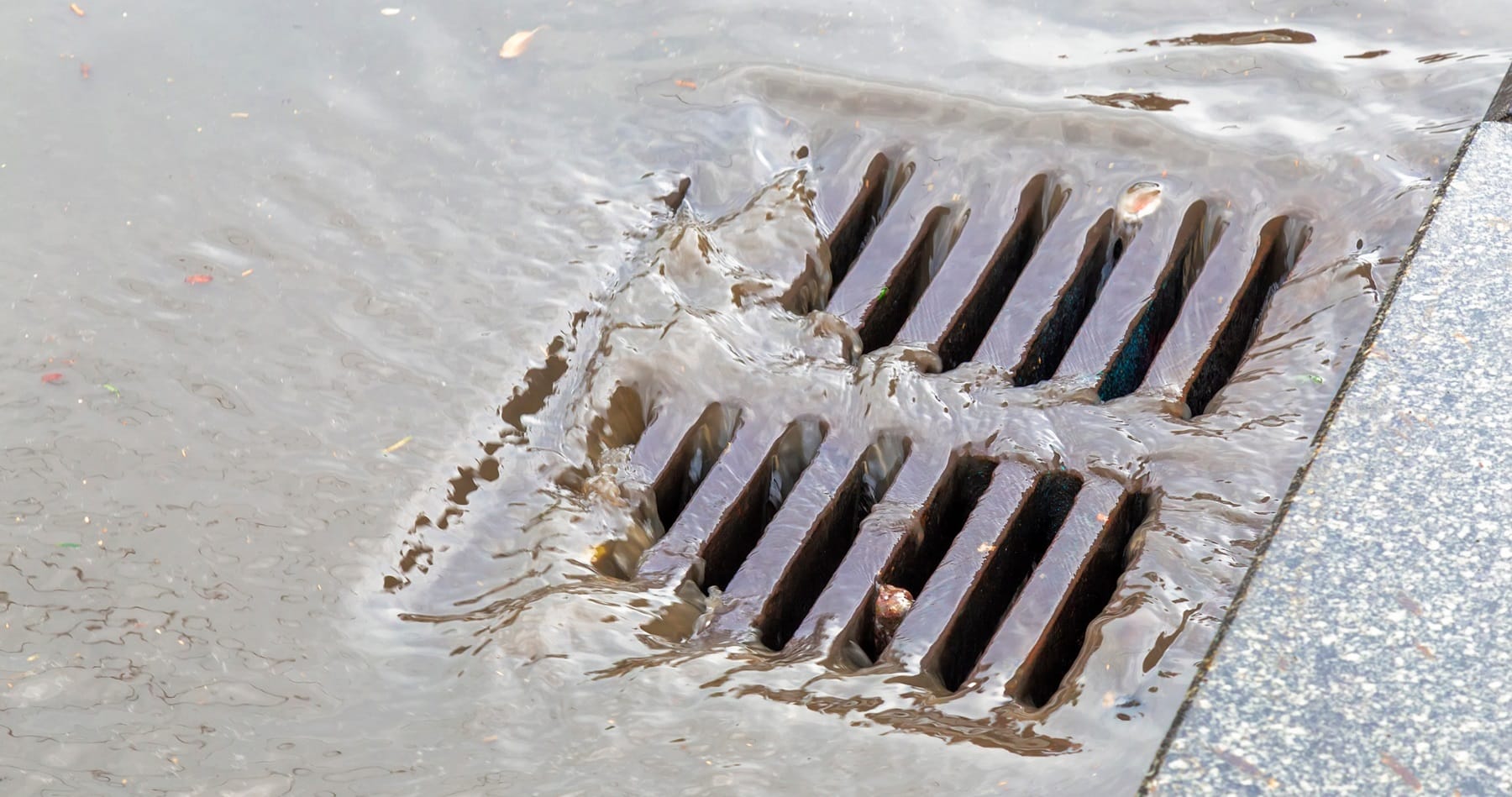
Long-term Solutions and Products
Implementing long-term solutions and using the right products can effectively prevent soap scum buildup in drainage systems. These measures ensure the longevity and efficiency of plumbing systems.
Enzymatic Cleaners and Their Function
Enzymatic cleaners are eco-friendly products that use natural enzymes to break down organic matter, including soap scum. These cleaners work by:
- Breaking Down Residue: Enzymes target and decompose the organic compounds in soap scum.
- Safe for Regular Use: They are non-toxic and safe for frequent application.
- Preventing Buildup: Regular use can prevent the accumulation of soap scum in drains.
Benefits of Installing a Water Softener
Water softeners are devices that reduce the hardness of water by removing calcium and magnesium ions. Installing a water softener can:
- Reduce Soap Scum Formation: Soft water prevents the reaction between soap and minerals, reducing soap scum.
- Extend Plumbing Life: Soft water minimises mineral buildup, protecting pipes from corrosion and damage.
- Improve Cleaning Efficiency: Soft water enhances the effectiveness of soaps and detergents, reducing residue.
Regular Maintenance Practices to Prevent Soap Scum
Consistent maintenance is key to preventing soap scum blockages. Recommended practices include:
- Routine Cleaning: Regularly clean drains with boiling water or enzymatic cleaners.
- Use of Drain Guards: Instal drain guards to catch hair and debris that contribute to soap scum.
- Periodic Inspections: Conduct regular inspections to identify and address early signs of buildup.
Importance of Choosing the Right Cleaning Products
Selecting appropriate cleaning products is crucial for maintaining clear drains. Consider the following:
- Eco-Friendly Options: Choose enzymatic cleaners for a safe and effective solution.
- Avoid Harsh Chemicals: Harsh chemical cleaners can damage pipes and are not environmentally friendly.
- Product Compatibility: Ensure the products are suitable for your specific plumbing system and water type.
By adopting these long-term solutions and using the right products, property owners, business owners, and facility managers can effectively manage and prevent soap scum blockages in their drainage systems.
Effects of Hard Water on Soap Scum Formation
Hard water significantly contributes to the formation of soap scum, leading to various issues in plumbing systems.
How Hard Water Exacerbates Soap Scum Issues
Hard water contains high levels of dissolved minerals, particularly calcium and magnesium. When soap is used in hard water, it reacts with these minerals to form insoluble compounds, commonly known as soap scum. This residue adheres to surfaces and accumulates over time, causing blockages in drains.
Signs of Hard Water in Your Plumbing System
Identifying hard water in your plumbing system can help address soap scum issues early. Common signs include:
- White or Grey Residue: Visible on faucets, showerheads, and sinks.
- Reduced Water Flow: Mineral buildup can restrict water flow in pipes.
- Soap Scum: Persistent soap scum in sinks, bathtubs, and showers.
- Dry Skin and Hair: Hard water can leave skin and hair feeling dry and rough.
Testing for Hard Water in Your Facility
Testing for hard water can confirm its presence and help in taking corrective measures. Methods include:
- Water Hardness Test Kits: Available at hardware stores, these kits provide a quick and easy way to test water hardness.
- Professional Testing: Hiring a professional to test water hardness can provide more accurate results.
- Observation: Noting the signs of hard water, such as soap scum and mineral deposits, can also indicate its presence.
Solutions for Hard Water Problems
Several solutions can help mitigate the effects of hard water:
- Water Softeners: Devices that remove calcium and magnesium ions from water, reducing hardness.
- Descaling Agents: Products that dissolve mineral buildup in pipes and appliances.
- Regular Cleaning: Frequent cleaning of surfaces and drains to prevent soap scum accumulation.
- Use of Liquid Soaps: Liquid soaps are less likely to react with hard water minerals compared to bar soaps.
By addressing hard water issues, property owners, business owners, and facility managers can effectively reduce soap scum formation and maintain efficient drainage systems.
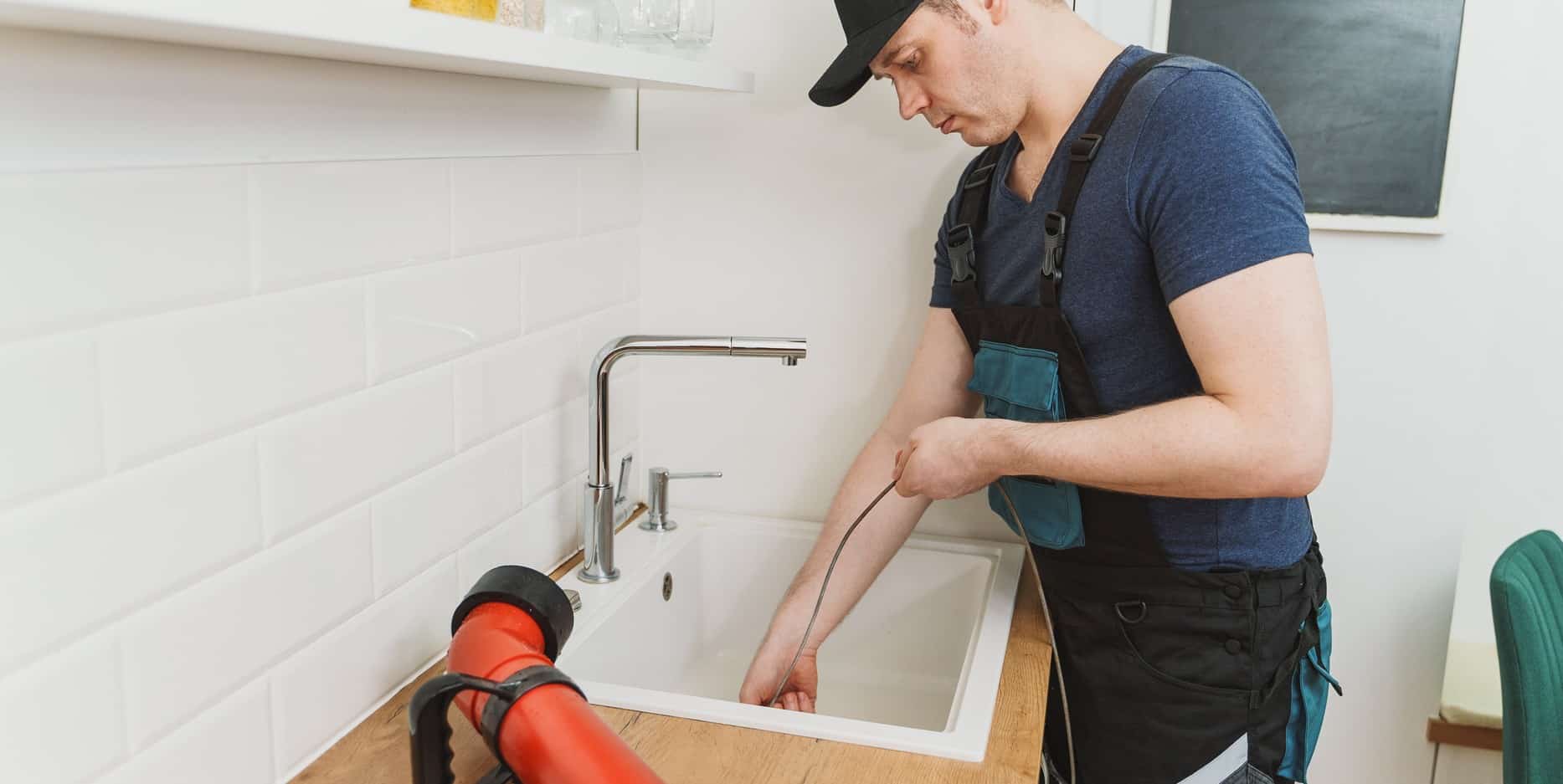
Technical Terms and Concepts Related to Soap Scum
Understanding the technical terms and concepts related to soap scum can help in effectively managing and preventing blockages in drainage systems.
Surfactants and Their Relation to Soap Scum
Surfactants are compounds that lower the surface tension between two liquids or between a liquid and a solid. They are key ingredients in soaps and detergents, allowing them to mix with water and remove dirt and oils. However, when surfactants in soap react with minerals in hard water, they form insoluble compounds that contribute to soap scum buildup.
Contribution of Sodium Lauryl Sulphate to Soap Scum
Sodium Lauryl Sulphate (SLS) is a common surfactant found in many cleaning products, including soaps and shampoos. SLS is effective at creating lather and removing oils, but it also reacts with calcium and magnesium ions in hard water to form soap scum. This reaction results in a sticky residue that adheres to surfaces and can cause blockages in drains.
Hydro Jetting and Its Use
Hydro Jetting is a professional method used to clear blockages in drainage systems. It involves the use of high-pressure water jets to remove debris, including soap scum, from the inside of pipes. The process is effective for:
- Clearing Blockages: The high-pressure water dislodges and flushes out soap scum and other debris.
- Thorough Cleaning: Ensures the entire pipe is cleaned, preventing future blockages.
Why Enzymatic Cleaners Are Recommended for Soap Scum
Enzymatic Cleaners are recommended for managing soap scum because they use natural enzymes to break down organic matter. These cleaners offer several benefits:
- Eco-Friendly: They are non-toxic and safe for regular use.
- Effective: Enzymes target and decompose the organic compounds in soap scum.
- Preventive: Regular use can prevent the accumulation of soap scum in drains.
By understanding these technical terms and concepts, property owners, business owners, and facility managers can make informed decisions about managing and preventing soap scum blockages in their drainage systems.
Final Thoughts on Managing Soap Scum Blockages
Soap scum blockages can be a persistent issue in drainage systems, but with the right strategies, they can be effectively managed and prevented.
Key Takeaways for Preventing Soap Scum Blockages
Preventing soap scum blockages involves a combination of regular maintenance and the use of appropriate products. Key strategies include:
- Regular Cleaning: Consistently clean drains with boiling water or enzymatic cleaners.
- Use of Soap-Free Cleansers: Opt for soap-free cleansers to reduce residue formation.
- Installation of Water Softeners: Softening water can prevent the formation of soap scum.
- Drain Guards: Instal drain guards to catch hair and debris.
How Regular Maintenance Saves Costs in the Long Run
Regular maintenance can significantly reduce the risk of severe blockages and costly repairs. By addressing minor issues early, property owners, business owners, and facility managers can:
- Prevent Major Blockages: Regular cleaning prevents the buildup of soap scum.
- Extend Plumbing Life: Reducing residue and mineral buildup protects pipes from corrosion and damage.
- Avoid Emergency Repairs: Proactive maintenance reduces the likelihood of sudden, costly plumbing emergencies.
Importance of Staying Informed About Plumbing Issues
Staying informed about plumbing issues is crucial for effective management and prevention. Understanding the causes and solutions for common problems like soap scum blockages allows for:
- Proactive Measures: Implementing preventive strategies before issues escalate.
- Informed Decisions: Choosing the right products and services for maintenance and repairs.
- Efficient Management: Ensuring the longevity and efficiency of the plumbing system.
Steps to Address Soap Scum in Your Drains
To address soap scum in drains, consider the following steps:
- Identify the Issue: Look for signs of soap scum buildup, such as slow drainage and bad odours.
- Implement DIY Methods: Use boiling water, vinegar and baking soda, or a drain snake for minor blockages.
- Seek Professional Help: For persistent or severe blockages, contact a professional plumber.
- Adopt Preventive Measures: Regularly clean drains, use soap-free cleansers, and instal water softeners.
By following these steps, property owners, business owners, and facility managers can effectively manage and prevent soap scum blockages, ensuring the smooth operation of their drainage systems.
